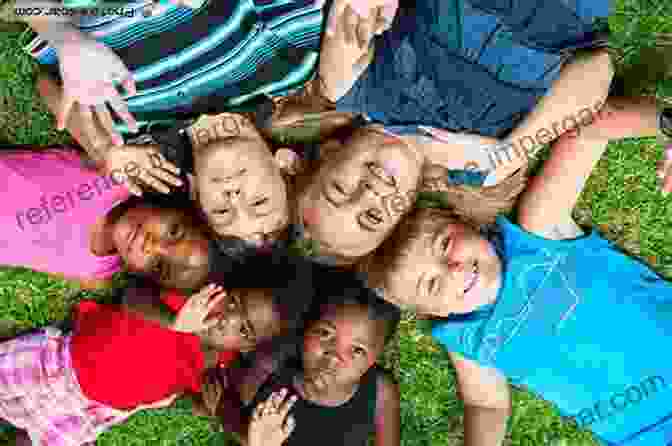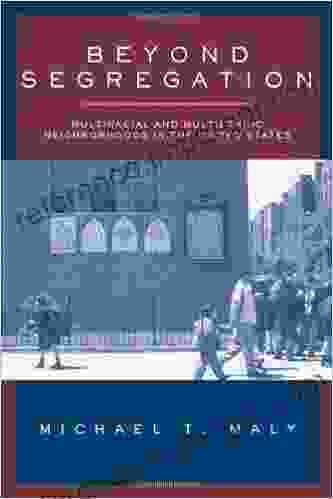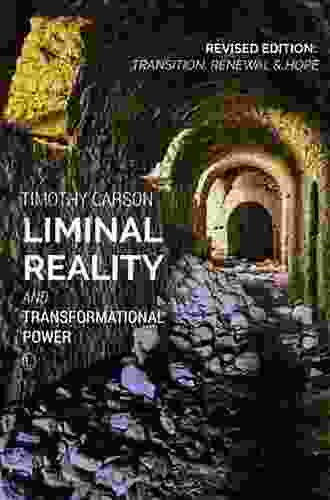Beyond Segregation: Multiracial and Multiethnic Neighborhoods

The United States has a long history of segregation, with deep-rooted patterns of racial and ethnic separation in housing and neighborhoods. However, in recent decades, there has been a growing trend towards multiracial and multiethnic neighborhoods, where people of different backgrounds live together in close proximity. This trend is driven by a number of factors, including the increasing diversity of the U.S. population, the Fair Housing Act of 1968, and the Civil Rights Movement.
Multiracial and multiethnic neighborhoods offer a number of benefits for residents, including:
- Increased exposure to different cultures and perspectives
- Reduced prejudice and discrimination
- Improved access to resources and opportunities
- Increased civic participation
- Enhanced sense of community
Despite these benefits, multiracial and multiethnic neighborhoods still face challenges, including:
- Gentrification and displacement
- Racial and ethnic tension
- Lack of affordable housing
- School segregation
Despite the challenges, multiracial and multiethnic neighborhoods are an important step towards creating a more inclusive and equitable society. They offer a unique opportunity to bring people of different backgrounds together and to build bridges between communities.
The Fair Housing Act of 1968
The Fair Housing Act of 1968 is a landmark piece of legislation that prohibits discrimination in housing based on race, color, religion, sex, or national origin. The act was passed in the wake of the Civil Rights Movement, and it has been instrumental in promoting desegregation and racial integration in housing.
The Fair Housing Act has been amended several times over the years, and it now includes protections against discrimination based on familial status and disability. The act is enforced by the Department of Housing and Urban Development (HUD).
The Civil Rights Movement
The Civil Rights Movement was a period of social activism in the United States that aimed to end racial discrimination and segregation. The movement began in the 1950s, and it reached its peak in the 1960s with the passage of the Civil Rights Act of 1964 and the Voting Rights Act of 1965.
The Civil Rights Movement had a profound impact on the lives of African Americans and other minority groups in the United States. It led to the desegregation of schools, public accommodations, and transportation, and it helped to create a more inclusive and equitable society.
Multiracial and Multiethnic Neighborhoods Today
Multiracial and multiethnic neighborhoods are becoming increasingly common in the United States. According to the U.S. Census Bureau, the number of multiracial neighborhoods increased by 50% between 2000 and 2010. This trend is expected to continue in the coming years, as the U.S. population becomes more diverse.
Multiracial and multiethnic neighborhoods offer a number of benefits for residents, including increased exposure to different cultures and perspectives, reduced prejudice and discrimination, and improved access to resources and opportunities. They are also an important step towards creating a more inclusive and equitable society.
Multiracial and multiethnic neighborhoods are the future of the United States. They offer a unique opportunity to bring people of different backgrounds together and to build bridges between communities. By promoting multiracial and multiethnic neighborhoods, we can create a more just and inclusive society for all.

Do you want to contribute by writing guest posts on this blog?
Please contact us and send us a resume of previous articles that you have written.
 Book
Book Novel
Novel Page
Page Chapter
Chapter Text
Text Story
Story Genre
Genre Reader
Reader Library
Library Paperback
Paperback E-book
E-book Magazine
Magazine Newspaper
Newspaper Paragraph
Paragraph Sentence
Sentence Bookmark
Bookmark Shelf
Shelf Glossary
Glossary Bibliography
Bibliography Foreword
Foreword Preface
Preface Synopsis
Synopsis Annotation
Annotation Footnote
Footnote Manuscript
Manuscript Scroll
Scroll Codex
Codex Tome
Tome Bestseller
Bestseller Classics
Classics Library card
Library card Narrative
Narrative Biography
Biography Autobiography
Autobiography Memoir
Memoir Reference
Reference Encyclopedia
Encyclopedia Anna Hess
Anna Hess Walter J Freeman
Walter J Freeman Richard A Moran
Richard A Moran Jason Wilson
Jason Wilson Lea Berman
Lea Berman Mark Sellers
Mark Sellers Jerome A Greene
Jerome A Greene Rob Peters
Rob Peters Elizabeth Millard
Elizabeth Millard Dusty Schmidt
Dusty Schmidt Gabriele Bammer
Gabriele Bammer Fm Bill Jordan
Fm Bill Jordan Don E Wilson
Don E Wilson James C Clark
James C Clark Stuart S Yeh
Stuart S Yeh George W Cox
George W Cox David H Wilson
David H Wilson Abdullah Mamun
Abdullah Mamun Tilly Culme Seymour
Tilly Culme Seymour Jon Peddie
Jon Peddie
Light bulbAdvertise smarter! Our strategic ad space ensures maximum exposure. Reserve your spot today!

 Joseph FosterWelding and Cutting Case Studies with Supervised Machine Learning Engineering
Joseph FosterWelding and Cutting Case Studies with Supervised Machine Learning Engineering
 Larry ReedHistorians at the Frankfurt Auschwitz Trial: Witnessing the Past, Shaping the...
Larry ReedHistorians at the Frankfurt Auschwitz Trial: Witnessing the Past, Shaping the... Alec HayesFollow ·9.4k
Alec HayesFollow ·9.4k John GrishamFollow ·5.7k
John GrishamFollow ·5.7k Fernando PessoaFollow ·4.1k
Fernando PessoaFollow ·4.1k Damon HayesFollow ·15.1k
Damon HayesFollow ·15.1k Houston PowellFollow ·14.3k
Houston PowellFollow ·14.3k Mario Vargas LlosaFollow ·7.9k
Mario Vargas LlosaFollow ·7.9k Preston SimmonsFollow ·4.8k
Preston SimmonsFollow ·4.8k Drew BellFollow ·19k
Drew BellFollow ·19k

 Cade Simmons
Cade SimmonsUnlock Your Financial Future: Discover the Transformative...
In a tumultuous and ever-evolving financial...

 Cortez Reed
Cortez ReedBeyond Segregation: Multiracial and Multiethnic...
The United States has a long history of...

 Seth Hayes
Seth HayesUnlock the Secrets of Reflexology: A Journey to Stress...
Explore the...

 Tennessee Williams
Tennessee WilliamsLiminal Reality and Transformational Power: Exploring the...
Life is a constant...

 Jack London
Jack LondonUnlock the Secrets of Human Behavior: A Comprehensive...
Have you ever wondered...

 Rod Ward
Rod WardThe Philosopher's Gift: Reexamining Reciprocity
The concept of reciprocity, the idea that...







